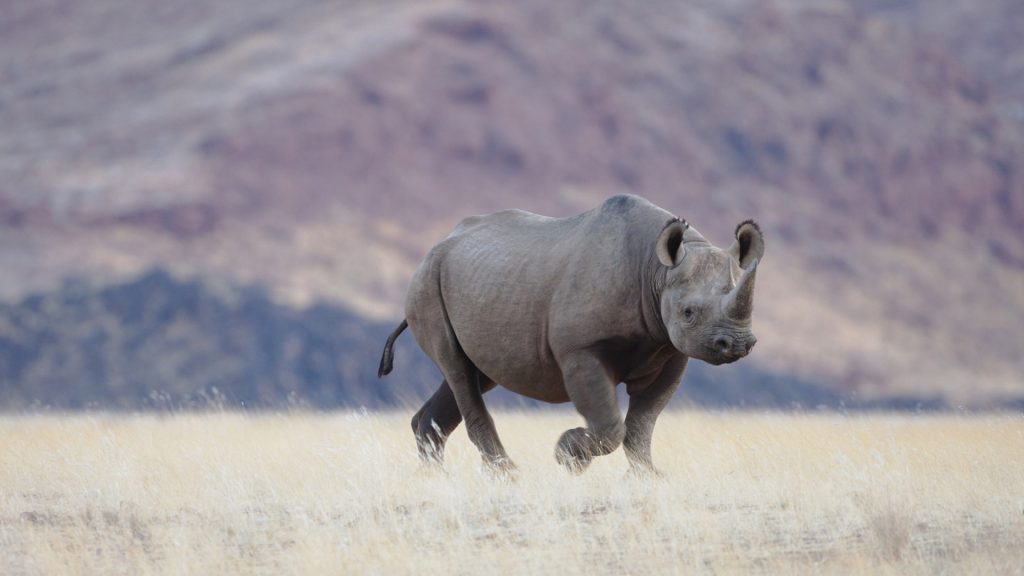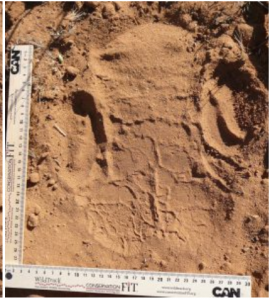New tracking technology is helping fight poaching in Namibia.
This article highlights the important role that technology plays in the conservation of species. It is best suited for Year 4, 5, 6, 7, and 9 Biology students as well as those interested in how science and technology come together in STEM.
Word Count: 685

Globally, wild animals are being killed or captured from their native habitats on a massive scale. Poachers then sell either the animal itself or items such as a rhino’s horn. Poaching has devastating impacts on wildlife and in some cases is the main reason for population declines. In Namibia in particular, the black rhino’s numbers dropped by 96.7% between 1960 and 1995, mainly because of poaching for their horns.
Technology, in its leaps and bounds, is playing a huge role in shifting the odds in favour of endangered species, with conservationists around the world deploying a wide range of techniques from camera traps to drones and sensors.
Recently, new technology being deployed in Namibia on the southwestern coast of Africa, is keeping watch on the critically endangered black rhinoceros (Diceros bicornis) by using their footprints.
The software, called the Footprint Identification Technique (FIT), works on the idea that a rhino’s footprint is just as unique as a human fingerprint. The software reads and analyses more than 100 measurements of the footprints before electronically archiving the images in a global database. That database can then be used to identify individuals.
Also: SCINEMA – Tracking Snow
“If you can find a match, you can identify the individual animal who left the mark, and, but plotting the locations of all the other places that mark has been seen, track its movements without disturbing is or coming into close enough contact with it for there to be a risk of animal-to-human viral transmissions,” says co-creator of FIT Zoe Jewell from Duke University in the US.
Over five weeks, researchers collected more than 1500 footprints of white and black rhinos across three sites.

“Footprints … not only provide a monitoring tool, but also current information such as ranging and social interactions,” the authors explain in their paper in the journal PeerJ.
FIT works in three different ways which allow a wide range of scientists, managers, guides or anti-poaching patrols to tailor the software to their needs.
First, the heel pattern of a footprint in an image is compared to images already in the FIT database to search for a match. This technique is useful when researchers find a random footprint and want to match it to an individual.
Second, the software can be used to survey footprints throughout a protected area to estimate the number of rhinos. Conservationists, anti-poaching patrols and researchers can then use the results from that survey to calculate how many patrol vehicles they need to monitor that area, or what other resources may be necessary to monitor the animals effectively.
The software can also be used to track and match individual rhinos to their footprint. Through this approach, an interactive library can be used by anti-poaching patrols to search for animals at the highest risk, such as individuals that are known to frequent areas, or those who haven’t been seen in recent years.
The new approach could not come at a better time. An estimated 2000 black rhinos call Namibia home. However, as COVID-19 restrictions hit South Africa, many poachers took advantage. Lockdowns, border closures and other measures put in place to stop the spread of COVID-19 severely impacted South Africa’s tourism industry which motivates and funds conservation efforts.
“You essentially have these animals with horns worth $100,000 or more that disappear from sight into the Namibian backcountry, making them an almost irresistible target for poachers,” says Jewell.
“Authorities often don’t know a rhino that’s gone missing has been poached until they find its bones or carcass.”
Footprint identification has traditionally been used by expert indigenous trackers, and widely used in India, for example, in monitoring tiger populations. However, in the late 1990’s it was widely abandoned in favour of camera-trap monitoring.
“FIT is a distillation of the traditional ecological skills of the expert tracks who have lived and worked in Africa for many years,” says FIT co-creator Sky Alibhai. “Using FIT allows their skills to be used effectively in conservation. This can benefit whole communities.”
This article was written by Amelia Nichele, Science Journalist at The Royal Institution of Australia.
Login or Sign up for FREE to download a copy of the full teacher resource





